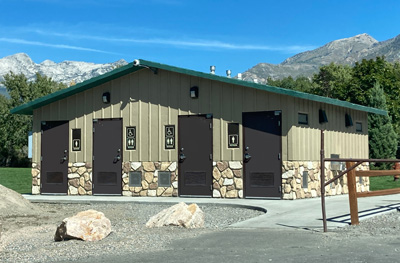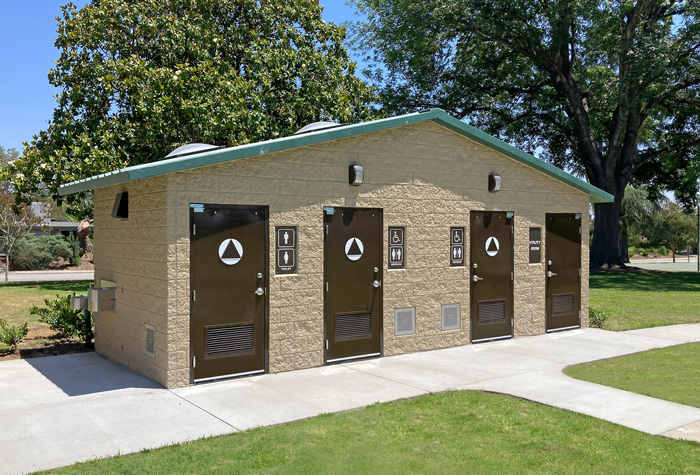Well-maintained, safe, and comfortable restrooms are an important amenity within your park, providing comfort and convenience for park visitors, as well as promoting health and hygiene. But planning the right number of restrooms to serve the people using your park can be a challenging task. While your park might see smaller numbers of visitors on a day-to-day basis, with numbers dwindling in the colder months and rising in the warmer months, some events will bring an influx of visitors.
Anticipating the changing needs of your park will help you ensure you’re providing an enjoyable experience for everyone, in peak seasons and off-seasons alike.
Q. We have a wide-ranging number of visitors to our park, with bigger crowds showing up on popular holidays like Memorial Day and the 4th of July, as well as for various events we host throughout the year. We want to ensure visitors are comfortable and enjoy our park by ensuring there’s enough restroom accommodations for everyone. But we’re concerned that on most days, our extra restroom space will go unused. What should we consider?

A. Parks that see an uptick in use during holidays or special events, while normally experiencing fewer visitors, typically will bring in porta-johns to handle the overflow of people using park restrooms. However, portable restrooms are not the ideal solution when you want your park visitors to have a comfortable and pleasant experience. Porta-johns can be odorous, and many park visitors consider them a less-than-hygienic option and will avoid them altogether.
Instead of relying on a less-than-ideal solution, consider installing a restroom building that features four separate, lockable restrooms. This way, you can open up all of the restrooms for use during popular park events and peak picnicking times like Memorial Day or Labor Day, while keeping all but one restroom locked during non-busy times. This will reduce maintenance costs and labor, as only one restroom will need to be cleaned on a regular basis, with additional rooms only requiring cleaning and attention when they’re unlocked and in use. In addition, this practice will help extend the life of your restroom structure, because some portion of the building is not being used all the time. Extend the life cycle of your restroom further by rotating which of the individual restrooms you keep open at any given time, ensuring that wear and tear is more evenly distributed.
Q. What else should we consider to ensure our restroom will stand the tests of time and harsh weather?
A. Look for premanufactured restroom structures that are designed to withstand use and abuse, as well as harsh weather. All-concrete construction, for example, will not rot, rust or corrode, meaning fewer repairs over your restroom’s lifecycle. High-strength precast concrete roofs and walls should be welded together, ensuring the structure is strong, and also making it easier to keep clean.
Your restroom facility should also be designed and manufactured to withstand the impact of any of the typical weather impacts in your area. Premanufactured restroom structures that feature high-strength precast concrete roofs and walls, as well as steel door frames and window frames cast into the concrete walls, will withstand strong winds and storms, as well as flooding, earthquakes, snow loads and more.
Lastly, be sure you include regular check-ins and maintenance as part of your staff’s routine. Depending on the level of use, a staff member should stop in regularly—weekly, daily, or even multiple times a day during periods of heavy use—to check the restroom’s toilet paper and towel dispensers and address any problems as they arise.
For More Information:
CXT Inc.
800-696-5766
www.cxtinc.com



